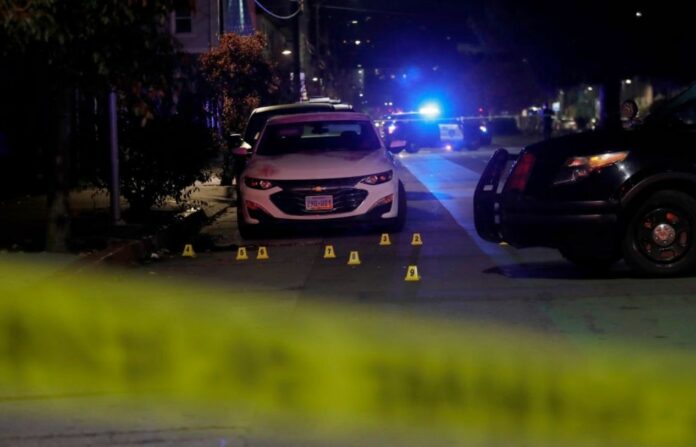In the U.S., the chance of dying from a gun is going up. In 2020, guns were the leading cause of death for children, teens, and young adults.
In some U.S. zip codes, the risk of firearm-related injuries and fatalities is disproportionately greater for young males.
Researchers at Brown University and the University of Pennsylvania compared the risk of gun-related death for young adult men living in the most dangerous parts of four major U.S. cities with the risk of combat death and injury for U.S. military personnel who served in Afghanistan and Iraq during active periods of war. This helped them understand the scale of the gun violence crisis and put it in perspective.
Mixed results were obtained. The research, published in JAMA Network Open, revealed that young men from Chicago and Philadelphia zip codes with the highest rates of gun violence had a much greater risk of gun-related mortality than U.S. military personnel sent to Afghanistan and Philadelphia for combat duty. On the other hand, the most dangerous neighborhoods in New York and Los Angeles were linked to much lower risk for young males than those in the two conflicts.
The study found that young men from minority racial and ethnic groups took most of the risks in all of the zip codes that were looked at.
Getting a sense of how big the gun problem is
For their study, the researchers looked at all shootings of 18- to 29-year-old men that were recorded as crimes in Chicago, Los Angeles, New York, and Philadelphia in 2020 and 2021. These are the four largest U.S. cities where public information about people who were shot was available. For New York, Chicago, and Philadelphia, they used public data sets of shooting deaths and injuries from each city. For Los Angeles, they took data on gun deaths and injuries from a larger public data set of crimes. The 2019 American Community Survey from the U.S. Census Bureau’s American Community Survey was used to link the data to the demographics of each zip code.
The researchers used peer-reviewed analyses of U.S. military data from 2001 to 2014 for the war in Afghanistan and 2003 to 2009 for the war in Iraq, which were both times of active combat, to figure out how many people died or were hurt because of wartime combat. Because there is limited data on the risks of serving in different military units at different times during the Afghanistan and Iraq wars, the researchers looked at the mortality and injury data of a single, de-identified Army brigade combat team engaged in combat during a 15-month period of the Iraq War that featured significantly above-average combat death and injury rates at a time considered to be the height of the conflict.
The investigation included 129,826 young males living in the four locations studied.
Compared to the risk of combat death faced by U.S. soldiers deployed to Afghanistan, the more dangerous of the two wars, young men living in Chicago’s most violent zip code had a 3.23 times higher risk of firearm-related homicide, while those in Philadelphia faced a 1.9 times higher risk. Even after accounting for the exceptional risks faced by the U.S. Army combat unit in Iraq, the young men in Chicago still faced noticeably higher risks, and the risks posed by the young men in Philadelphia were similar.
But these results were not seen in the most dangerous areas of Los Angeles and New York, where young men had a 70% to 91% lower risk of being killed or hurt than soldiers in the Afghanistan war.
When the researchers looked at the racial and ethnic backgrounds of the young men in the zip codes they studied, they found that the risk of violent death and injury was almost entirely carried by people from minority racial and ethnic groups. In all four cities, Black and Hispanic males made up 96.2% of those who were killed by a gunshot and 97.3% of those who were hurt but didn’t die.
The study’s authors note that young males in high-crime areas of the United States share more than just an increased risk of death by gunshot with their counterparts elsewhere.
They add: “Exposure to combat has been associated with stress-inducing hypervigilance and elevated rates of homelessness, alcohol use, mental illness and substance use, which, in turn, are associated with a steep discounting of future rewards.”
The findings of the study “which show that young men in some of the communities we studied were subject to annual firearm homicide and violent injury rates in excess of 3.0% and as high as 5.8% — lend support to the hypothesis that beyond the deaths and injuries of firearm violence, ongoing exposure to these violent events and their risks are a significant contributor to other health problems and risk behaviors in many U.S. communities.”
Del Pozo also said that the health risks are probably even higher for people who live in cities because they have to face their “warzones” every day for their whole lives, while a military tour of duty in Afghanistan usually only lasts 12 months. Del Pozo said that the study results help show how big the gun problem is, which is important for cities that want to come up with a good public health response.
“The findings suggest that urban health strategies should prioritize violence reduction and take a trauma-informed approach to addressing the health needs of these communities,” del Pozo adds.
The National Institute on Drug Abuse (K01DA056654) and the National Institute of General Medical Sciences provided funding for the research (P20GM139664).
Source:10.1001/jamanetworkopen.2022.48132
Image Credit: Jane Tyska/Digital First Media/East Bay Times via Getty Images
